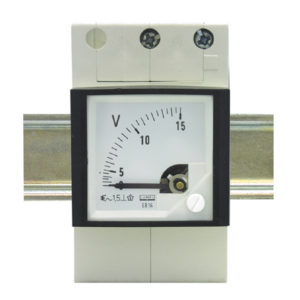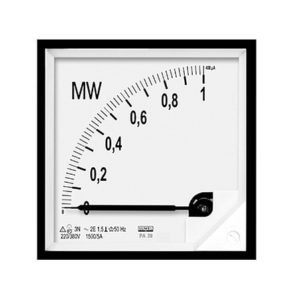Moving Coil Meter
Moving-coil meters are intended for measuring d.c. voltage or d.c. current. These meters with built rectifiers can also be used for measuring a.c. voltages and a.c. currents. MA17P, MA19P, MA12P meters with built-in rectifiers are used for measurement of the rectified current or voltage arithmetical mean value and they are such calibrated that they indicate the RMS value at sinusoidal curve shape. The measurement of non- sinusoidal a.c. magnitudes results in additional errors. Meters are designed for mounting into panels. MB16 meters are adapted for a fast assembly rail mounting (35 mm rail) in compliance with EN 60715 standard MA16, MA17 and MA19 meters are designed for interchangeable dials.









